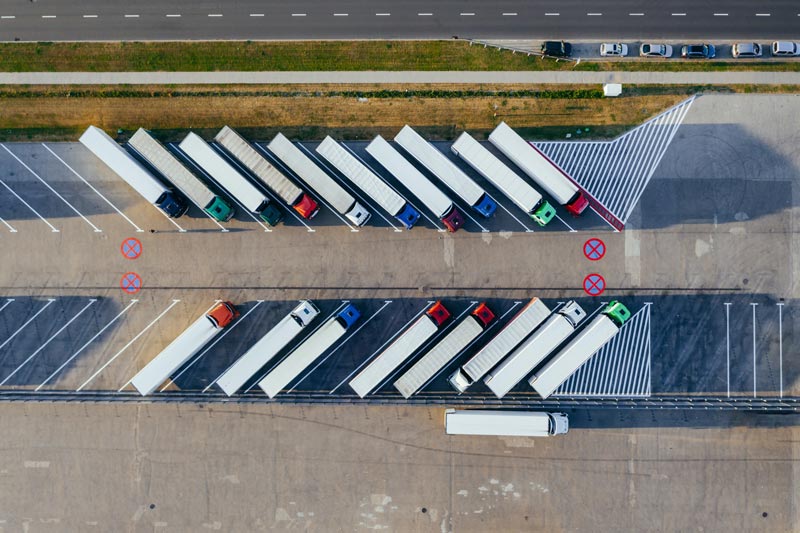
PC-12: API commences work on next heavy-duty engine oil category
We are on the threshold of an alternative fuels’ revolution, with electrification ushering the light-duty fleet into a new driving age. Hydrogen is another agitator that has considerable support amongst scientists and automotive experts and may play a prominent role in the future of transportation fuels. However, when it comes to larger vehicles, the future remains abstruse.
Traditional truck and bus manufacturers are accelerating investments in zero-emissions technology, and new market entrants such as Proterra, Rivian, and of course Tesla, are threatening to energise the paltry arsenal of heavy-duty electric vehicle options currently available. But despite the investment, excitement, and newsworthiness of zero-emissions technology, the reality is that it may be many years before zero-emissions technology can provide the distance, vehicles, pricing, and load capacity that is commonplace in diesel trucking fleets. In the immediate term, fleet operators still need to adhere to tightening emissions regulations and reduce fuel costs.

The American Petroleum Institute (API) introduced its most recent heavy-duty engine oil standards on December 1, 2016. API CK-4 and FA-4 superseded earlier API CJ-4 technology, providing additional control of engine oil aeration, oxidation, and viscosity loss due to shear. API FA-4 enables incremental fuel economy benefits for heavy-duty engines with lower high temperature/high shear (HTHS) viscosity than API CK-4 oils. While API CK-4 has enjoyed strong uptake, API FA-4 is expected to come into its own with “next-generation” engines from MY2021.
Irrespective of the moderate adoption of API FA-4, API has commenced work on a new heavy-duty engine oil standard that will align with ambitious future goals for fuel economy and emissions and forthcoming engine technology. API anticipates a five-year development program and one-year licensing period for “PC-12,” the nomenclature that has been adopted for this new category under development. The likely launch date for PC-12 which stands for proposed category 12 is 2027. The exact naming convention for the engine oil specification won’t be confirmed until much closer to first licensing. It will be decided and voted on by members of the API Lubricants Group.
API has formed the heavy-duty engine oil New Category Evaluation Team (NCET) to further define the needs of the new specification. NCET includes three subgroups. Subgroup one is focused on wear protection and test availability; subgroup two will concentrate on subcategory optimisation, chemical box, and viscosity; and the final subgroup is tasked with investigating oxidation, corrosion, and other remaining topics of interest. The expectation is that the information-gathering activities of the subgroups will take three to four months. NCET provided an update on PC-12 progress and planning during a virtual meeting of the Diesel Engine Oil Advisory Panel (DEOAP) on June 10, 2021.
Engine tests that have been in use for decades are at risk due to parts availability. The criteria for hardware and test availability for PC-12 is that they remain available until 2040. Subgroup one has been tasked with identifying gaps in the previous engine category and ascertaining replacement tests. Brent Calcut, the co-chair of subgroup one, advised virtual meeting attendees that the PC-12 test availability analysis is complete and has been sent to NCET and the subgroups for feedback. Calcut is OEM liaison manager for Engine Oils at Afton Chemical.
It is unlikely the Mack T-11 Engine Lubricant Test that is utilised in API CK-4 and API FA-4 will be available in 2040. T-11 is a 252-hour test to evaluate the viscosity increase and soot concentration in a turbocharged, intercooled engine equipped with exhaust gas recirculation. Therefore, PC-12 will require a new test method. Calcut’s presentation on test availability also indicated the Mack T-12 test will be unavailable for PC-12, with the subgroup questioning whether a new test is required for liner wear and top ring mass loss.

The high-soot engine Roller Follower Wear Test (RFWT) is used to evaluate how effectively lubricants limit axle wear in the roller cam lifter. The availability of this test is also doubtful for PC-12 with redundancy currently being evaluated. Calcut’s address also highlighted that the CEC TDG-L-115 Low Viscosity Bearing Wear and the CEC TDG-L-116 Low Viscosity Ring/Liner Wear tests are unavailable for PC-12.
Subgroup one’s attention now turns to wear protection across all viscosity grades. Calcut emphasised numerous wear concerns including the need for new wear parameters on the engine manufacturers’ watch list. A trend to lower viscosity oils has raised fears of bearing wear with high temperature high shear (HTHS) of less than 3.5. No existing test is available for this parameter, though, the documentation noted the possibility of a modified T-13, C-13, or ISM test as a replacement.
Other wear concerns included oil-lubricated fuel pump wear, material compatibility—due to growing use of diamond-like carbon (DLC) coatings, and tribofilm formation. Tribofilm not found on ferrous surfaces as expected could lead to excessive cam and tappet wear. Roller-type cam wear is not covered by an existing category test. The subgroup has outlined the possibility of using a modified T-13, DD-13, or 6.7L test. The new wear parameters need more definition, says Calcut. To prioritise these new wear parameters, a champion will be assigned for each parameter.
Allen Comfort, R&D engineer at the U.S. Army, was announced as co-chair of subgroup two at the May 13 meeting of the DEOAP. Comfort provided an update of the activities of NCET subgroup two during the most recent meeting. Pertinent issues included the potential for divergent limits for on- and off-road fuel economy testing, concerns around soot content and the relevance of tests, and whether the HTHS correlation is good enough compared to the actual fired engine test. The issue of how decisions will impact backward compatibility with existing API categories was also tabled.
Comfort confirmed the intention of subgroup two to request engine test data for engine oils that are be low the API FA-4 viscosity limit from the member companies of DEOAP and other concerned parties. A draft request letter, reviewed during the NCET meeting, invited data from tests run with low viscosity engine oils and information on whether specific PC-11 engine tests were able to be completed using viscosity grades lower than 5W30 and 3.2 HTHS. PC-11 was officially licensed by API as API CK-4 and FA-4 on December 1, 2016. Data will be anonymised by API, the Truck and Engine Manufacturers Association (EMA), and other groups involved.
David Brass, lead industry liaison advisor at Infineum and co-chair of subgroup three, confirmed subgroup three has surveyed members of EMA to support the action items for the group. The survey focused on parameter needs and concerns about oxidation, corrosion, seals, stop/start technology, and biodiesel compatibility. A follow-up survey is planned to address other focus areas in the near future, says Brass.

In addition to the aforementioned parameters, subgroup three’s areas of focus include elastomer compatibility, deposits/sludge, aeration/foaming, and coating compatibility/tribofilm formation. Though, deposits/sludge and aeration/foaming will only be covered if current tests are deemed not viable for PC-12.
EMA will provide data on why improved oxidation performance is required and the approximate percentage improvement needed in oxidation performance, says Brass. EMA will also confirm that the current tests, Volvo T-13, Sequence IIH, meets the performance required.
Existing tests in API specifications for corrosion protection are MACK T-12, HTCBT, and Sequence VIII. The subgroup is investigating if current metals (copper, lead, tin, phosphor bronze) are still required and whether there are additional metals of concern.
Currently, no test exists in API’s specifications for biodiesel compatibility/fuel dilution. EMA will provide usage projections of biodiesel in the U.S. and other countries, and additional feedback around biodiesel concerns, says Brass. On elastomer compatibility, the association will also review seal materials currently covered in ASTM D7216 to determine if any should be removed or new ones added. ASTM D7216 is the standard test method for determining automotive engine oil compatibility with typical seal elastomers.
EMA will also confirm if a focus on start-stop—oil starvation/water dilution—is necessary with the introduction of new technology. The oil starvation issue is due to the engine stopping while at a red light or in traffic. The oil could drain away from the piston rings and may result in oil starvation. Water dilution is due to condensation during winter when the engine is shut down. Cooler temperatures allow condensation on the cylinder and exhaust. Upon restart, the water is scraped into the crankcase where it accumulates, unless the engine oil sump temperature is high enough to boil it off. No test is currently available in API’s specifications, so if start-stop technology is anticipated, the organisation will need to confirm the parameters of concern.
Finally, the EMA will determine if the NOACK test meets future needs for oil volatility, and whether oil consumption from the Volvo T-13, CAT 1N, and CAT C-13 satisfy the oil consumption measurements. The association will confirm if oil volatility and consumption needs differ for lower viscosity grade engine oils and new engine platforms.
echo '






